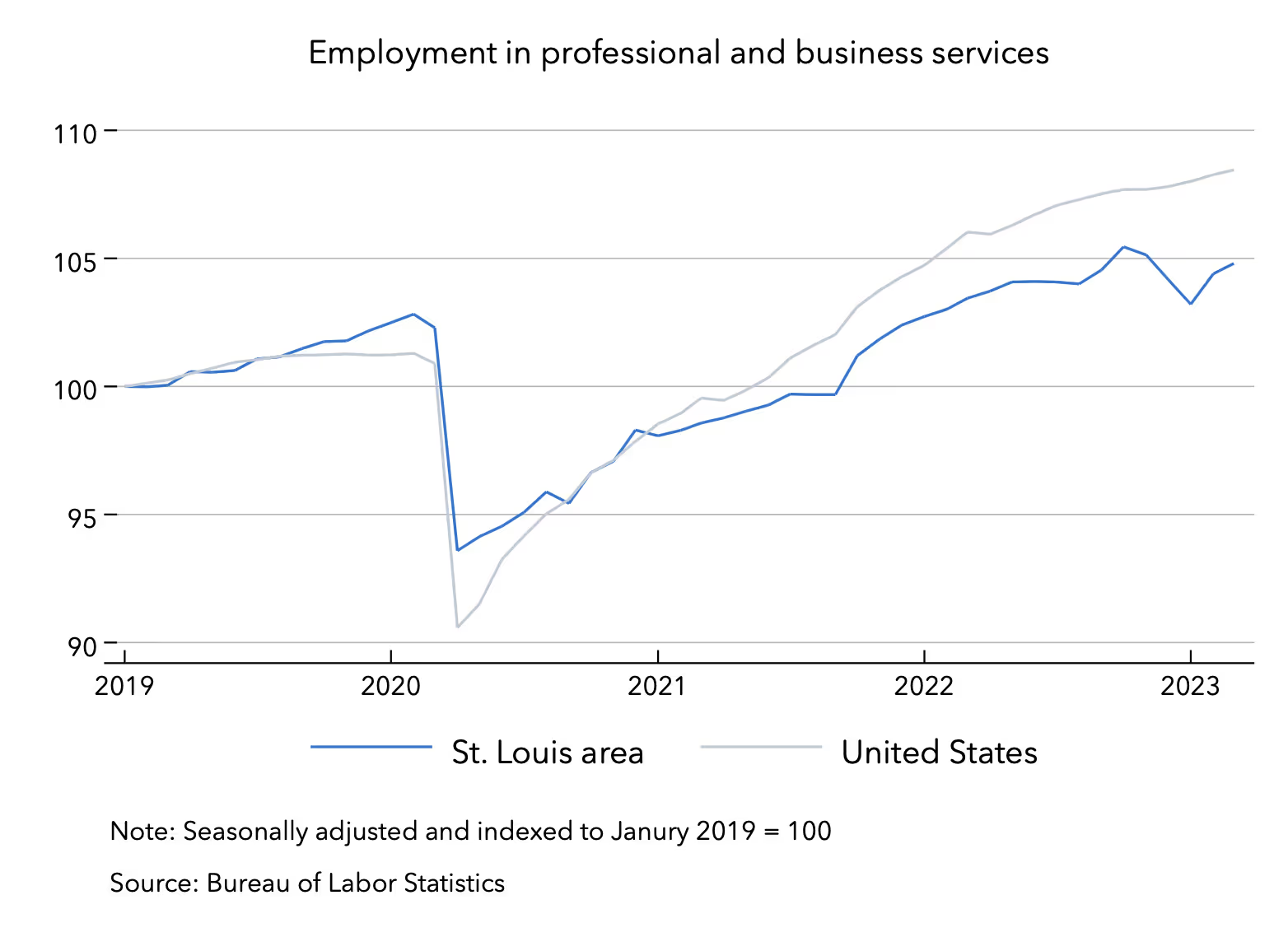Find Workers
⌄


Key takeaways
The population of the St. Louis metropolitan area has been changing steadily over the past few decades. The area as a whole has been fairly stable in population, but the city of St. Louis has emptied out. In 1990, almost 400,000 people lived in the city; now fewer than 300,000 do. Black residents in particular have left a city whose culture was largely theirs.
The move to the suburbs may now be turning into a move away from the region altogether. Recent estimates suggest that the overall population has begun to fall, and the tightening of the labor market has offered further proof. The area now has one of the lowest unemployment rates in the nation. So how can St. Louis's businesses, many of whom underpin interstate commerce as well as serving the local community, continue to grow? For those looking for temp staffing and workers in San Marcos, the options are expanding.
Earlier in the Covid-19 pandemic, it looked like the St. Louis area might benefit from the enormous movement of goods from factories into people's homes. The area is one of the Midwest's biggest hubs for shipping freight, so the shift in consumer spending toward e-commerce was a boon to its economy. Here is how the path of employment in trade, transportation, and utilities in the St. Louis area compared to the nation as a whole:
Earlier in the Covid-19 pandemic, it looked like the St. Louis area might benefit from the enormous movement of goods from factories into people's homes. The area is one of the Midwest's biggest hubs for shipping freight, so the shift in consumer spending toward e-commerce was a boon to its economy. Here is how the path of employment in trade, transportation, and utilities in the St. Louis area compared to the nation as a whole:

Employment in the St. Louis area bounced back more quickly and strongly than in the nation as a whole but then stalled close to its pre-pandemic level. Growth since 2021 has been much slower than in the rest of the United States.
A similar trend occurred in employment for manufacturing, though it has only recently recovered to its pre-pandemic level:

Once again, the St. Louis area rebounded earlier than the nation as a whole, then lagged behind. And this was true even for white-collar jobs, one of the few categories that were growing robustly before the pandemic in the St. Louis area:

It certainly looks like the stagnation in St. Louis's population is having an effect. After all, you can't create jobs if there aren't enough people to take them.
The situation in St. Louis won't last forever. Americans are free to move around in search of better opportunities. If there is an economic impetus for employment in the St. Louis area, then pay will rise until people come to take the jobs. And indeed this has been happening. Here are the average hourly earnings for the two blue-collar sectors above:

Pay stalled in 2022 along with the demand for goods, as consumers shifted their spending into services. But hourly pay in these sectors is still more than 16% higher than it was in February 2020, at the beginning of the pandemic. That's just a tick above the cumulative inflation in consumer prices over the same period in the St. Louis area.
Meanwhile, average hourly earnings adjusted for inflation at the national level fell about 3% for manufacturing and 1% in trade, transportation, and utilities. So unlike in the nation as a whole, pay in the St. Louis area has kept up with and even exceeded inflation since the pandemic began.
Eventually, that difference should bring in workers from other parts of the country. In the meantime, we're helping workers and businesses to connect for extra hours of flexible work. On average, our shifts have been paying $16/hour, a third higher than the local minimum wage. As we grow and help businesses to staff new roles, that number will surely rise and maybe the population of St. Louis will resume its rise as well.
These links offer more information:
Bureau of Labor Statistics Economic Summary
Workforce Data (City of St. Louis)
St. Louis Region Labor Market Analysis (State of Missouri)
State of the St. Louis Workforce (St. Louis Community College)
Realtime metrics
These metrics, derived from data aggregated across the Instawork platform, compare the two weeks starting 4/13/2023 to the previous two weeks. To control for the overall growth of the Instawork marketplace, only shifts involving businesses that booked shifts in both periods are included:
To receive future briefings and data insights from our Economic Research team, please subscribe below. Follow daniel altman on Twitter at @AltmanEcon or on LinkedIn.